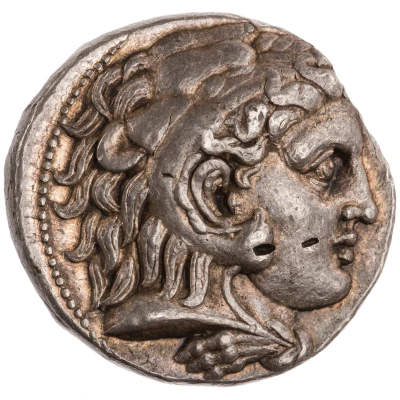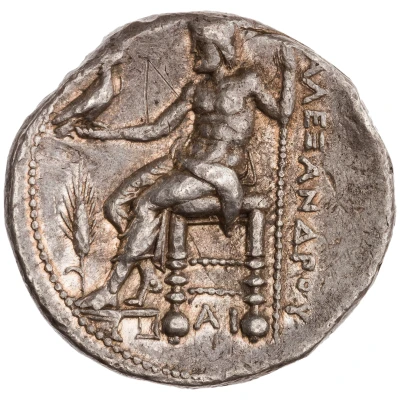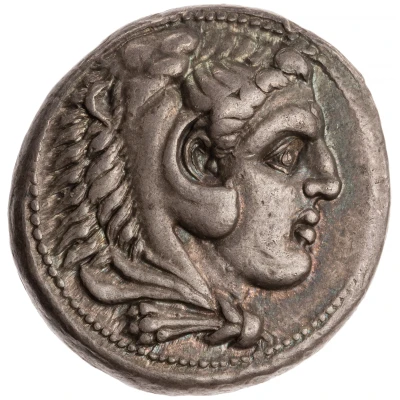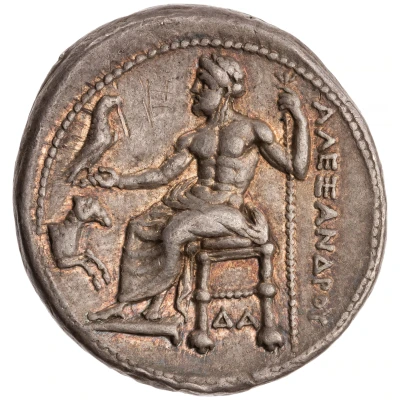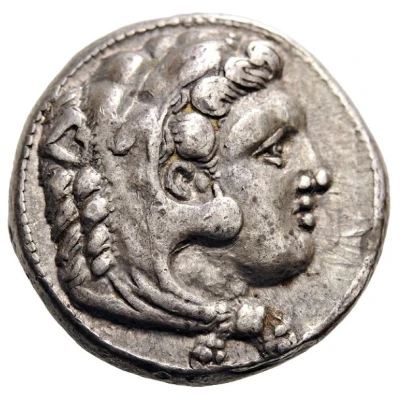
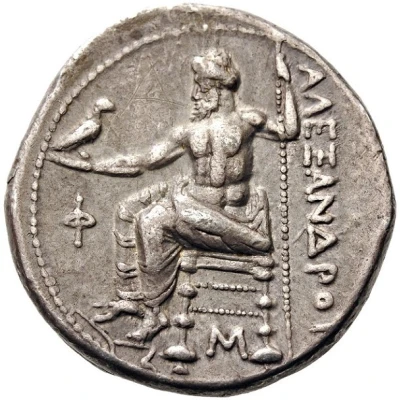

© Nomos AG
Tetradrachm - Alexander III Babylon 331 BC - 325 BC
| Silver | 17.11 g | 24.0 mm |
| Issuer | Kingdom of Macedonia |
|---|---|
| King | Alexander III the Great (336 BC - 323 BC) |
| Type | Standard circulation coin |
| Years | 331 BC - 325 BC |
| Value | Tetradrachm (4) |
| Currency | Drachm |
| Composition | Silver |
| Weight | 17.11 g |
| Diameter | 24.0 mm |
| Shape | Round (irregular) |
| Technique | Hammered |
| Orientation | Variable alignment ↺ |
| Demonetized | Yes |
| Updated | 2024-10-10 |
| Numista | N#188910 |
|---|---|
| Rarity index | 92% |
Reverse
Zeus seated left on low throne, holding long scepter in his left hand and, in his right, eagle standing right with closed wings. To left, Φ and below throne M
Script: Greek
Lettering: ΑΛΕΞΑΝΔΡΟΥ
Translation: Alexander (III, the Great)
Interesting fact
The Tetradrachm coin , which features Alexander III (also known as Alexander the Great) was minted during his reign in Babylon, is significant because it represents a turning point in the history of coinage. It was during Alexander's reign that the standardized coinage system was introduced, which replaced the earlier system of bartering and trading with irregularly shaped pieces of precious metals. The Tetradrachm coin, which means "four drachmas" in Greek, was the standard unit of currency in Alexander's empire and was widely used for trade and commerce. This coinage system was later adopted by other ancient civilizations, and its influence can still be seen in modern-day currency systems.
